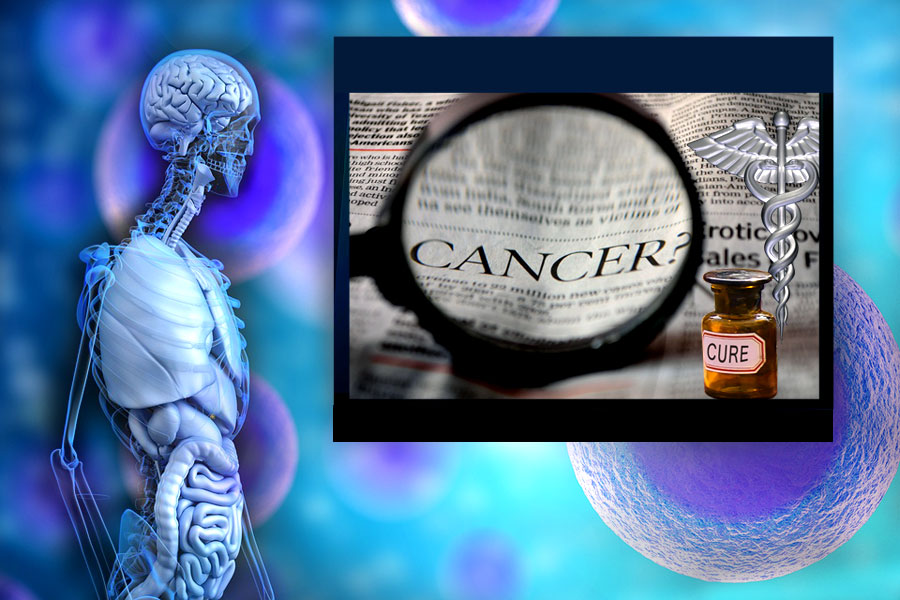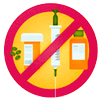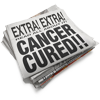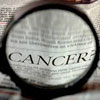Krebiozen: Another Suppressed Cancer Cure
 by Prevention Magazine
by Prevention Magazine
We now rank far down the list of civilized nations in infant mortality and other significant medical statistics. I was able to document the shocking record of these cold-blooded tycoons who not only plan and carry out famines, economic depressions, revolutions and wars, but who also find their greatest profits in their manipulations of our medical care. The cynicism and malice of these conspirators is something beyond the imagination of most Americans. They deliberately milk our people of millions of dollars each year through “charitable” organizations and then use these same organizations as key groups to bolster their Medical Monopoly. Fear and intimidation are the basic techniques by which the conspirators maintain their control over all aspects of our health care, as they ruthlessly crush any competitor who challenges their profits. As in other aspects of their “behavioral control” over the American people, their most constantly used weapon against us is their employment of federal agents and federal agencies to carry out their intrigues. ~ Eustace Mullens (Murder By Injection)
The History of a Tragedy
Krebiozen: a cancer cure that was and is hidden from the world.
Per Herbert Bailey, author of A Matter of Life or Death, The Incredible Story of Krebiozen, Krebiozen has been thwarted and suppressed by the American Medical Association since 1951.
This story begins with the experiments of Dr. Stevan Durovic, a former assistant professor at the University of Belgrade. He came to the United States after several years of experimentation in South America, with a drug which he had discovered and which he believed to be a cure for cancer. Once in the United States he was brought to the attention of Dr. Andrew C. Ivy, a medical researcher of unassailable reputation and gigantic stature in his profession. Dr. Ivy was, at the time, Vice President of the University of Illinois, and head of its huge Medical School. His efforts in cancer research had led to his appointment as Executive Director of the National Advisory Cancer Council and he was also a director of the American Cancer Society. An important, a respected, and honored man.
Early Results Show Promise
Dr. Ivy became interested in the theory and possibilities shown in Dr. Durovic’s substance, Krebiozen, and he decided to test it in the scientific manner his experience had taught him was necessary for an accurate picture of the drug’s potential. From the very beginning the results were astounding in their positiveness. Though Krebiozen was used only on persons who had been diagnosed as hopeless and close to death, its remarkable characteristics showed themselves almost at once. There was a lessening or complete disappearance of pain, and in many cases tumors were dissolved and replaced with healthy tissue. Physicians who were trying it all over the country reported like results. It began to look as though science had finally come up with a weapon against cancer that had a chance to win the fight.
With such a product as a cancer cure, scientific and humanitarian considerations are joined by a third consideration–commercialism. Without a doubt, a cancer cure is worth a lot of money. What victim would not offer all he owns, or all he can borrow for even a chance that he might be cured? Large drug companies have made millions on substances designed to treat diseases far less urgent and wide spread than cancer. This then is why two Chicago businessmen tried to get control of the distribution rights to Krebiozen. When they were refused, they threatened to ruin Krebiozen and everyone connected with it. One of the men who made this threat was the friend of J. J. Moore, then treasurer of the American Medical Association.
The promise shown in the early tests of Krebiozen seemed to be emphasized with each new experiment. The excitement and relief provided by such apparent success left little room for worry over the threat that had been made. How could so proud and secure a venture as a scientifically proven cancer cure be scuttled by the influence of commercial interests?
Dr. Ivy Pays the Price
The answer to that question came with devastating swiftness. In rapid succession Dr. Ivy was suspended from membership in the Chicago Medical Society, removed from the vice presidency of the University of Illinois, and had his resignation accepted by both national cancer societies noted above. But worst of all, his work with Krebiozen was assailed as inaccurate and unscientific. His conclusions were dismissed or so interpreted as to discredit his research methods, methods which had been good enough to earn him a worldwide reputation, methods which till then had been regarded as the ultimate in scientific detachment and objectivity. Suddenly the approach was wrong, the conclusions untrue, the impression was fostered that Dr. Ivy was no longer capable of reliable scientific observation. It was even suggested that Dr. Ivy had become senile and was loyal to Krebiozen only because his mind was failing.
The fate of Krebiozen itself was similar. Within a few short months after Dr. Ivy made known some observations on 26 patients whose history showed Krebiozen to be of “promise,” the Journal of the American Medical Association published a Status Report on Krebiozen. It dealt with 100 case histories, a project which top scientists would have difficulty in completing properly in two years, let alone six weeks even working at top speed! The report was extremely damaging, and the temper of the average observer after reading it is reflected in a Chicago Tribune editorial which said, “Medically speaking, Krebiozen is dead. Let it be buried without ceremony.” These people, among them thousands of doctors who rely on the Journal of the American Medical Association for all of their current medical information, never knew that the core of the report was faked. The doctor who wrote the article made so many omissions of factual and favorable results and so altered the findings that were at his disposal that even the most naive researcher would have discredited his conclusions at once—as thoroughly unscientific and worthless. These and other facts showing that the A.M.A. acted in a biased and arbitrary fashion concerning Krebiozen were sworn to under oath at a subsequent investigation of the whole situation by the Illinois State Legislature. But still the smudges on the reputation of Krebiozen could not be erased. When anyone powerful enough to affect a change became interested, he would contact a doctor, perhaps a cancer specialist, who had seen and believed the A.M.A. report, and the doctor could only say he’d seen a report proving Krebiozen worthless. How could the doctor be aware that the article, not Krebiozen, was a fraud? How could he know that five patients examined by the author of the report (but deliberately omitted from it) were free from any detectable cancer after 5 years, due to treatment with Krebiozen?
The Truth Is Buried
Dr. Ivy was having similar problems in publishing a monograph in which he reported on 687 patients over a six year period who had been treated with Krebiozen. The work showed observable benefits in 70% of the cases, and directly objectively beneficial results in 50% of the cases. Dr. Ivy sent an article based on this monograph to one medical journal after another—remember this was news on an effective treatment for cancer! -only to have it returned with apologies and excuses for not being able to publish it. The monograph was finally published by a small general publisher, Henry Regnery, Chicago. Instead of headlines and excitement over the proven claim that Krebiozen had destroyed cancer cells in half of the patients treated with it, the monograph was greeted with apathy and indifference. The American Cancer Society officially announced that it would stand by the A.M.A. verdict of 1951 in the matter, as did others whose opinion could have helped foster interest or general acceptance.
Misrepresentations Detailed
The stories of Krebiozen’s fight for acceptance against organized medicine are too numerous for even a brief mention of all of them here, however the details of a correspondence between three Sloan-Kettering cancer specialists and a Mrs. Dorothea Seeber on behalf of a friend in the last stages of cancer are typical—Mrs. Seeber wrote a letter asking Sloan-Kettering doctors their opinion of Krebiozen and whether it would be advisable to use it on a “hopeless case.” One doctor answers that “We tried it (Krebiozen) on 100 patients and I regret to say that we could not substantiate any of the claims ascribed to its use.” Another answer said, “I have had only a few patients who have been tried on Krebiozen, and there was no improvement in their condition.” A third wrote: “A considerable amount of work has been done on this drug and we found it is absolutely worthless.” An affidavit was given by Dr. Ivy in which he swears that these three doctors never asked for nor received any Krebiozen for use on cancer patients and could not, therefore, have come to any firsthand findings concerning it. Until 1956, the date of the affidavit, not a single ampule of Krebiozen had ever been sent to the Sloan-Kettering Institute!
Dr. Ivy made every worthwhile effort to get the A.M.A. to run a double-blind study on Krebiozen, the type in which neither the doctor nor the patient is aware of whether or not the injection he gives contains the substance being tested. The experiment would have been set up by A.M.A. experts; they would choose the doctors and the patients, and the results would be published for all the world to see whether Krebiozen is a miracle or a fraud. And yet the AMA refused to have any part of such an objective test. Why?
It is a humiliating admission that the most powerful medical authority in the world saw fit to deprive a proper investigation of a promising, proven, non-toxic cure for cancer due to personal selfish motivations of one of its highest officials. It also tells the tale of the selfless men who sacrificed everything–money, security, position and reputation–in the attempt to get Krebiozen to those who needed it. These and the other heroes and villains will be brought to light. When this story becomes more openly known, the indignation and scorn that will be heaped upon those responsible for holding back Krebiozen will defy the imagination. ~ Prevention Magazine
Following is the enlightening article: Things You Should Know About Cancer – In the mid-1940s, doctors already knew radiation and surgery were failures at curing cancer and in fact did more damage than good. Here we are in 2019 and we are still using the same methodologies that we knew didn’t work back then more than 75 years ago. As Einstein said: “The definition of insanity is doing the same thing over and over again and expecting a different result.”
Posted in Health, Other Topicswith 1 comment.






Let me tell you a story about krebiozen. My father, in the early 1960s, was terminally ill with adrenal cancer, which had spread through his body. He and my mother heard about krebiozen, got their family doctor to agree to give it (even though the doctor didn’t believe in it), and my father started getting injections. My parents had no reason to believe it would help (thus, fighting the placebo argument), but gave it a try. My father’s need for pain medication injections (sometimes 2x per night) decreased, then stopped. The tumor, growing around the arteries where his kidney had been removed, shrunk to the point that the doctors at the VA Hospital in Marion, IL, could not understand what had happened. My father was able to return somewhat to his farming. The family doctor admitted that if one of his family members were diagnosed with cancer, he would used krebiozen on him or her. As a side note, he had been misdiagnosed as having testicular cancer and had been radiated. Sometime after the krebiozen treatments began to work, my mother became pregnant with my younger brother, much to everyone’s surprise. My father did die of cancer in 1967, but imagine the possibilities had he been able to have the medicine before he was deemed terminal.